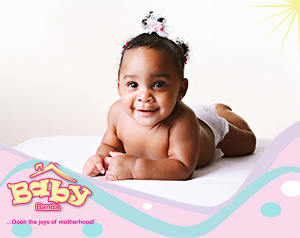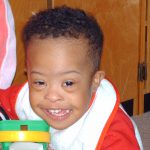Your baby’s motor development is an individual process. Infants usually acquire motor skills in the same order, but the rate at which they achieve the milestones differs from one child to another. One baby may crawl at seven months while another will crawl at nine months.
Nevertheless, you should track your baby’s progress to ensure both of you are on the right track.
0-3 Months
Usually, at this time, your baby will only be able to do a few movements like
- Raising the little arms and feet
- The baby can lift and hold the head up when he lies on his tummy.
- Develops the ability to move the eyes and head in a coordinated manner from one side to the other. Please know that the child prefers looking at people at this level instead of TV and other objects.
- Thrusting out the tongue. Although this action is purely reflexive, it helps the child find food.
- Your child will try to grasp your finger or any other object you place on his tiny hands.
- When you hold the child against your chest, you will see him turning his head towards to receive the nipple.
3-9 Months
-
- Baby can sit alone for a few seconds without your support.
- Rolls from back to tummy and tummy to back.
- When you hold him upright, he supports his entire weight with the legs.
- The child will voluntarily reach out and grasp objects. He can also shake and move the grasped object to the mouth.
- Babies realize they have toes and feet at this stage, so you will see your child trying to eat the feet when lying on his back.
- The young one will have a better vision so they can follow your movements from one place to the other.
- Moves from tummy or back to sitting.
-
- Creeps on hands and knees with alternate arm and leg movement.
9-12 Months
-
- Pulls to stand and cruises along with the furniture.
- Stands alone and takes several independent steps.
- Sits steadily and indefinitely.
- Can be crawling confidently.
- Can put things in and out of a container.
- The baby can hold a spoon, find hidden objects easily, and flip pages.
12-24 Months
- At this point, you have to baby-proof your house because nothing moves fast like a toddler. Your baby will walk independently with a few random falls.
- The baby is excited to explore the house, so you’ll find him pulling drawers, cables, inserting things in sockets, and opening doors.
- If left at the table unsupervised, the toddler can break all utensils.
- The child can also try to climb on surfaces to pick up a toy, hence leave such things within reach.
- Sits unsupported while using the hands for play.
- Your baby’s vision is clear now, and he can follow your movements when you’re far.
- The baby tries to feed himself.
Take-Home
You know what to look for to know that your child is growing well. If you suspect that something is amiss, please consult your health care provider immediately.













